When it comes to electric guitars, few are as iconic as the Gibson Les Paul. Alongside the Fender Stratocaster and Telecaster, the Les Paul solidified the solid bodied electric guitar as a permanent fixture in the music world, going beyond being just a passing trend.
Renowned musicians such as Jimmy Page, Joe Perry, Slash, Peter Green, and Bob Marley have all contributed to the Les Paul's legendary status. But the story of the Les Paul's creation is surprisingly long and complex. Les Paul himself recognized the potential of a solid-bodied electric guitar as early as 1945, but it took seven years for Gibson president Ted McCarty to embrace his vision. Even then, the initial Les Paul models that hit the market were quite different from the guitar we know today.
Let's delve into the history of the Gibson Les Paul, exploring its origins and the profound impact it had on the electric guitar world.
Les Paul and "The Log"
When we think of the solid-body electric guitar revolution, we often associate it with the early to mid 1950s. However, the story of the Les Paul starts much earlier. In 1945, Les Paul, an already respected guitar innovator, presented Gibson with his idea for a solid-body Spanish guitar.
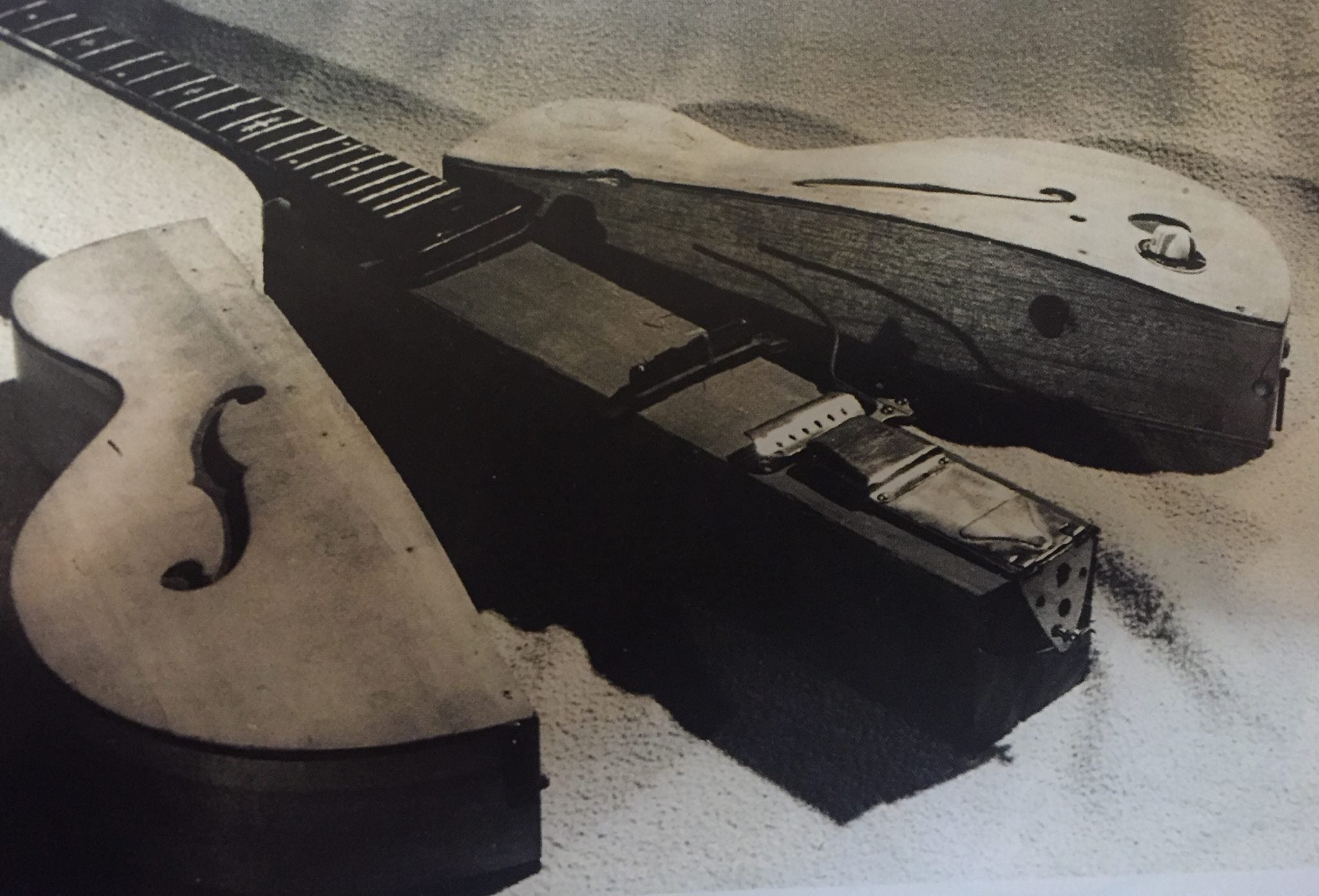
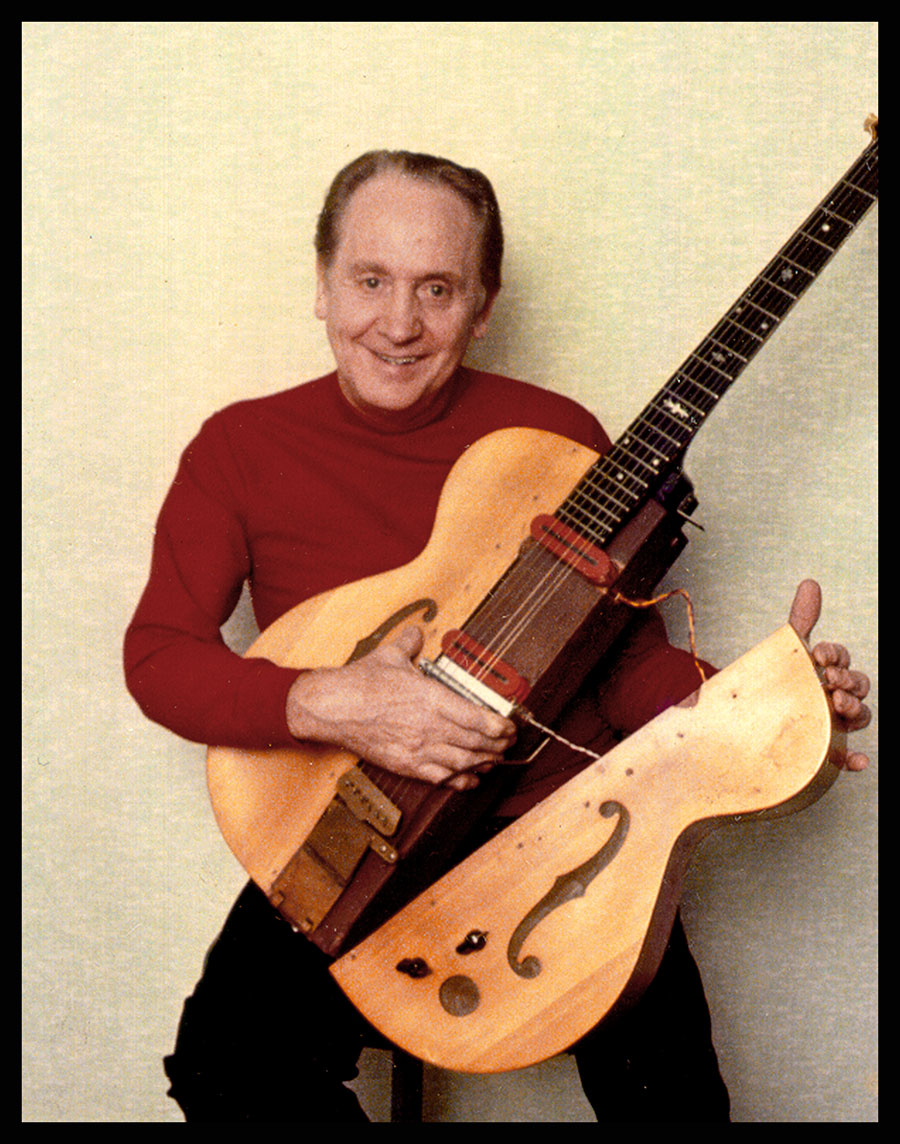
The instrument consisted of a pine block running through its center, slightly deeper and wider than the fretboard. Hollow sides, or "wings," were added to provide shape. Les dubbed his prototype "The Log," a name that may not sound particularly inspiring but accurately described a chunk of pine with some bolted-on components.
Although Les recognized that solid-body guitars were the future of electric guitar production, Gibson initially didn't share his enthusiasm. They ridiculed the concept and rejected the prototype.
However, by 1951, the guitar market had changed significantly. Fender's newly named "Telecaster" made waves in the guitar-playing community, proving that Les Paul's vision for a solid-bodied guitar wasn't as far-fetched as Gibson had originally believed. Unsurprisingly, in the same year, Ted McCarty and his team at Gibson started working on what would eventually become the Les Paul model.
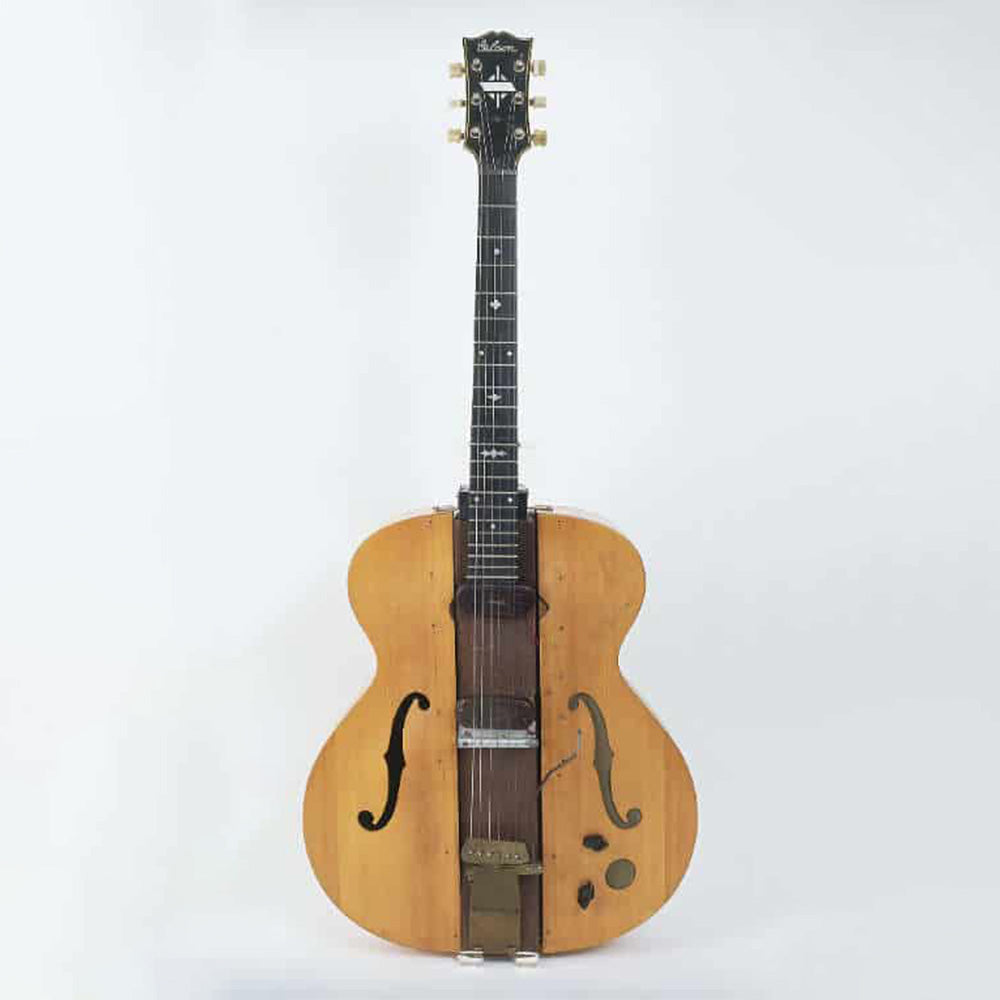
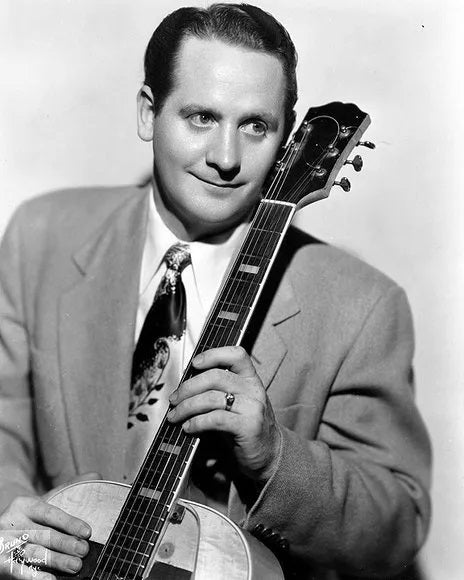
The Les Paul Takes Shape
Gibson aimed to create a high quality, expensive instrument that aligned with their reputation as a premier manufacturer. This was not meant to be a Telecaster clone. In late 1951, they approached Les Paul with a prototype of their new guitar and a proposition: they wanted to put Les's name on the headstock to boost sales.
The extent of Les Paul's involvement in the instrument's design at this stage is a topic of debate. Gibson employees from that time claim that the version presented to Les Paul closely resembled the first production model. On the other hand, Les himself asserted that Gibson granted him final say in every aspect of the design. Regardless of who was responsible for its design, the first Les Paul was launched in 1952, with Les debuting the guitar during a live performance at New York's Paramount Theater
that June.
The original Les Paul guitar featured many of the characteristics we now associate with it: the distinctive shape, a mahogany body, and the iconic "Gold Top" color scheme, chosen to highlight the instrument's status as a high-end guitar. However, there were some differences.
The pickups were P90s, and the trapeze tailpiece resembled those found on Gibson's hollow-body guitars of the time.
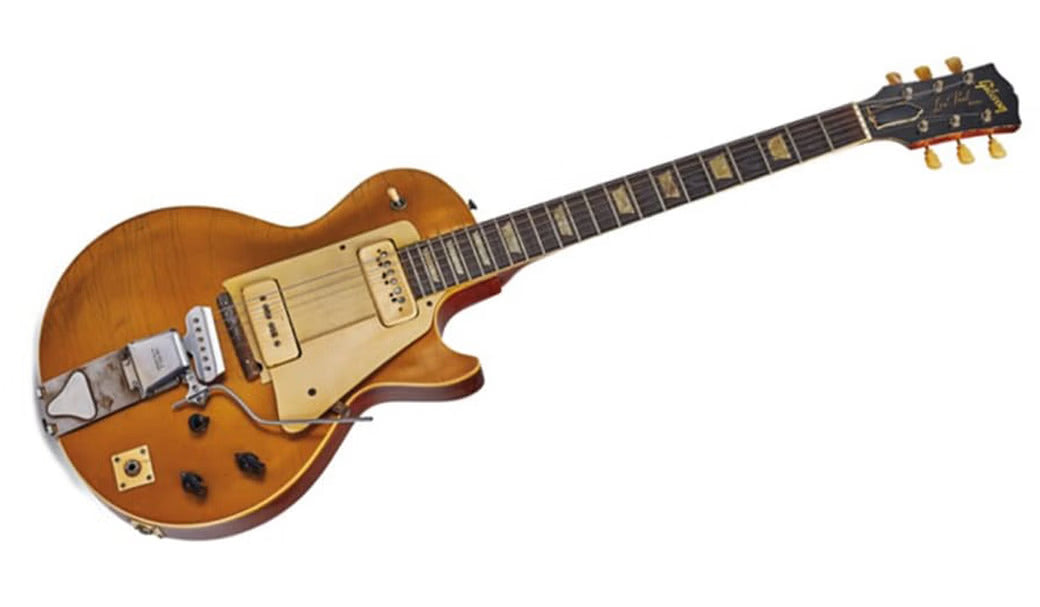
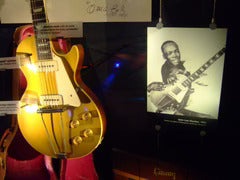
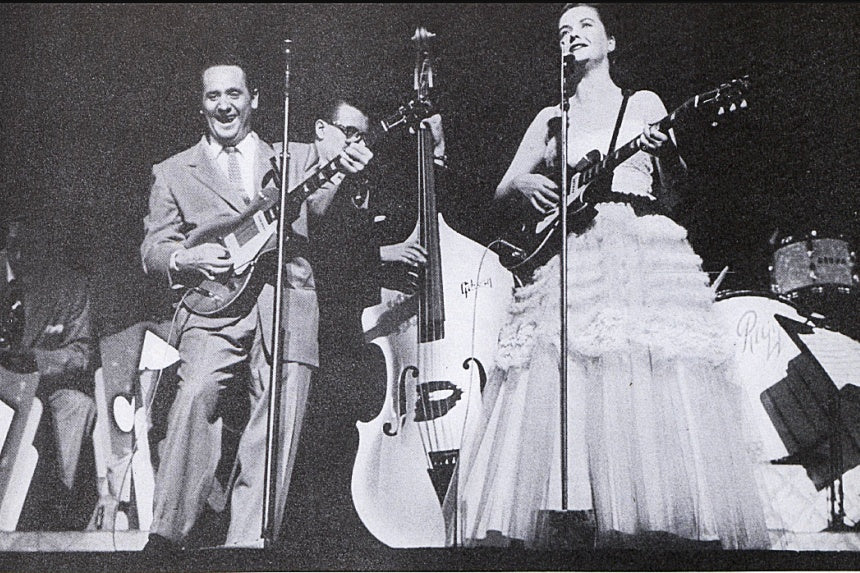
In those early 1952 models, the tailpiece was actually installed incorrectly, much to Les Paul's dismay. The strings wrapped under it instead of over, making it impossible to dampen the strings with the right hand.
Following Les Paul's objections, the tailpiece was corrected the following year. Although this greatly improved the playing experience, intonation issues persisted. As a result, Gibson completely abandoned the trapeze tailpiece in 1954, giving rise to the now-iconic tune-o-matic bridge.
It wasn't until 1957 that the final component of the classic Gibson Les Paul fell into place. The P90 pickups of earlier models were replaced with new "humbucker" pickups designed by Gibson technician Seth Lover. These "PAF" (Patent Applied For) models provided louder output and a fuller, less trebly tone compared to their P90 counterparts. With the introduction of these pickups, the iconic sound of the Les Paul was born.


Death and Rebirth
In 1958, Gibson discontinued the Gold Top finish, replacing it with the enduring Sunburst design. However, these sunburst Les Pauls produced between 1958 and 1960 did not resonate with consumers. Only 1,700 units were sold in those two years, leading Gibson to discontinue them in 1961 and introduce a new "Les Paul" model that we now know as the Gibson SG.
That could have been the end of the story for the classic sunburst Les Paul. However, one guitar legend changed its fate. In 1964, Keith Richards purchased a 1959 Sunburst Les Paul, becoming the first British guitarist to use one. His peers followed suit, with Eric Clapton switching to a Les Paul in 1965, inspired by Freddie King. By the end of the 1960s, Peter Green, Jeff Beck, and Jimmy Page were leading the Les Paul resurgence.
Gibson suddenly found itself facing a dilemma. Their most popular guitar model—and arguably the most popular electric guitar in the world at the time—was no longer in production. Responding to growing demand from guitar players, Gibson reintroduced the Les Paul to the market in 1968, solidifying its legendary status. The Les Paul has remained in production ever since.
Do you own a Gibson Les Paul? Have you ever had the opportunity to play one of the legendary 1958-1960 Sunburst models? And where do you stand in the Gibson vs. Fender divide Stop by our gallery and explore our collection of Les Paul guitars. Try out a Les Paul for yourself or have a conversation with one of our knowledgeable sales professionals who are experienced musicians themselves. Visit us today and discover the world of Les Paul at Art of Guitar.


Les Paul and "The Log"
When we think of the solid-body electric guitar revolution, we often associate it with the early to mid 1950s. However, the story of the Les Paul starts much earlier. In 1945, Les Paul, an already respected guitar innovator, presented Gibson with his idea for a solid-body Spanish guitar.

The instrument consisted of a pine block running through its center, slightly deeper and wider than the fretboard. Hollow sides, or "wings," were added to provide shape. Les dubbed his prototype "The Log," a name that may not sound particularly inspiring but accurately described a chunk of pine with some bolted-on components.

Although Les recognized that solid-body guitars were the future of electric guitar production, Gibson initially didn't share his enthusiasm. They ridiculed the concept and rejected the prototype.
However, by 1951, the guitar market had changed significantly. Fender's newly named "Telecaster" made waves in the guitar-playing community, proving that Les Paul's vision for a solid-bodied guitar wasn't as far-fetched as Gibson had originally believed. Unsurprisingly, in the same year, Ted McCarty and his team at Gibson started working on what would eventually become the Les Paul model.

The Les Paul Takes Shape
Gibson aimed to create a high quality, expensive instrument that aligned with their reputation as a premier manufacturer. This was not meant to be a Telecaster clone. In late 1951, they approached Les Paul with a prototype of their new guitar and a proposition: they wanted to put Les's name on the headstock to boost sales.

The extent of Les Paul's involvement in the instrument's design at this stage is a topic of debate. Gibson employees from that time claim that the version presented to Les Paul closely resembled the first production model. On the other hand, Les himself asserted that Gibson granted him final say in every aspect of the design. Regardless of who was responsible for its design, the first Les Paul was launched in 1952, with Les debuting the guitar during a live performance at New York's Paramount Theater
that June.
The original Les Paul guitar featured many of the characteristics we now associate with it: the distinctive shape, a mahogany body, and the iconic "Gold Top" color scheme, chosen to highlight the instrument's status as a high-end guitar. However, there were some differences.
The pickups were P90s, and the trapeze tailpiece resembled those found on Gibson's hollow-body guitars of the time.


In those early 1952 models, the tailpiece was actually installed incorrectly, much to Les Paul's dismay. The strings wrapped under it instead of over, making it impossible to dampen the strings with the right hand.
Following Les Paul's objections, the tailpiece was corrected the following year. Although this greatly improved the playing experience, intonation issues persisted. As a result, Gibson completely abandoned the trapeze tailpiece in 1954, giving rise to the now-iconic tune-o-matic bridge.

It wasn't until 1957 that the final component of the classic Gibson Les Paul fell into place. The P90 pickups of earlier models were replaced with new "humbucker" pickups designed by Gibson technician Seth Lover. These "PAF" (Patent Applied For) models provided louder output and a fuller, less trebly tone compared to their P90 counterparts. With the introduction of these pickups, the iconic sound of the Les Paul was born.

Death and Rebirth
In 1958, Gibson discontinued the Gold Top finish, replacing it with the enduring Sunburst design. However, these sunburst Les Pauls produced between 1958 and 1960 did not resonate with consumers. Only 1,700 units were sold in those two years, leading Gibson to discontinue them in 1961 and introduce a new "Les Paul" model that we now know as the Gibson SG.
That could have been the end of the story for the classic sunburst Les Paul. However, one guitar legend changed its fate. In 1964, Keith Richards purchased a 1959 Sunburst Les Paul, becoming the first British guitarist to use one. His peers followed suit, with Eric Clapton switching to a Les Paul in 1965, inspired by Freddie King. By the end of the 1960s, Peter Green, Jeff Beck, and Jimmy Page were leading the Les Paul resurgence.

Gibson suddenly found itself facing a dilemma. Their most popular guitar model—and arguably the most popular electric guitar in the world at the time—was no longer in production. Responding to growing demand from guitar players, Gibson reintroduced the Les Paul to the market in 1968, solidifying its legendary status. The Les Paul has remained in production ever since.
Do you own a Gibson Les Paul? Have you ever had the opportunity to play one of the legendary 1958-1960 Sunburst models? And where do you stand in the Gibson vs. Fender divide Stop by our gallery and explore our collection of Les Paul guitars. Try out a Les Paul for yourself or have a conversation with one of our knowledgeable sales professionals who are experienced musicians themselves. Visit us today and discover the world of Les Paul at Art of Guitar.



